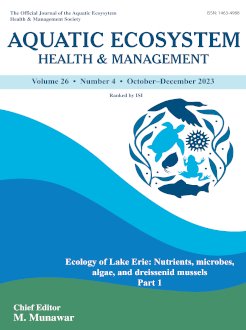In the early 2000s, harmful algal blooms and hypoxia returned to Lake Erie following a period of ecosystem recovery from the late 1980s through the 1990s. This corresponds to a drastic increase in dissolved reactive phosphorus loads and flow-weighted mean concentrations in the major tributaries to the Western Lake Erie Basin. However, there is substantial variability in suspended sediment and nutrient yields across Lake Erie tributaries. It is well known that agricultural and urban land uses lead to increased watershed sediment and nutrient yields, especially in the absence of proper management practices. yet attributes such as watershed soil types and slope can also affect yields. We examined the influence of watershed land use, hydrology, soil type, and slope on annual nutrient and sediment yields from tributaries to Lake Erie monitored as part of the Heidelberg Tributary Loading Program. A minimum of one sample and, during storm runoff, up to three samples a day are analyzed for all major nutrients and suspended sediments. The 5-year average annual yields across these watersheds exhibited distinct geographic patterns from west to east, with high suspended sediment but lower nutrient yields from the eastern most tributaries (Cuyahoga, Old Woman Creek, Huron) and the lowest sediment along with lower nutrient yields from the western most tributaries (Raisin, Tiffin, Lost). The Maumee, Portage, Sandusky, along with select subwatersheds tended to have intermediate sediment yields with high nutrient yields. Altogether, the % cultivated crops and poorly drained soil in the watershed increased nutrient yields whereas a higher % slope and lower % pasture increased sediment yields. These patterns highlighted unique regional differences that can help guide management decisions for these watersheds that ultimately would improve the health of Lake Erie.
How to translate text using browser tools
29 May 2024
Drivers of annual suspended sediment and nutrient yields in tributaries to Lake Erie
L. T. Johnson,
N. Manning,
J. Dezse,
J. Boehler,
E. Clark,
T. Fulton,
N. Miller,
A. Roerdink
ACCESS THE FULL ARTICLE
land use
nitrogen
phosphorus
sediment
watershed





